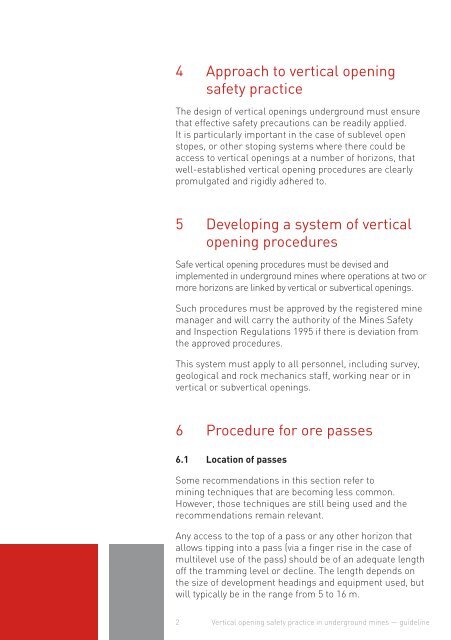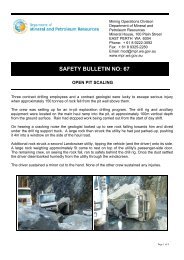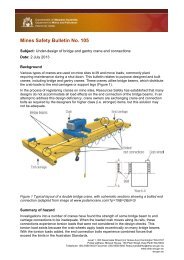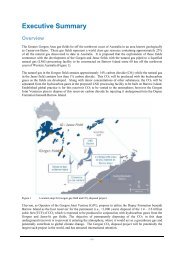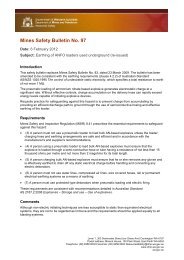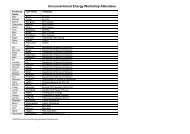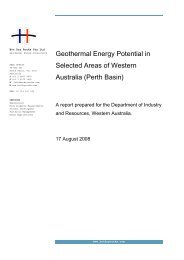Vertical opening safety practice in underground mines - guideline
Vertical opening safety practice in underground mines - guideline
Vertical opening safety practice in underground mines - guideline
Create successful ePaper yourself
Turn your PDF publications into a flip-book with our unique Google optimized e-Paper software.
4 Approach to vertical <strong>open<strong>in</strong>g</strong><br />
<strong>safety</strong> <strong>practice</strong><br />
The design of vertical <strong>open<strong>in</strong>g</strong>s <strong>underground</strong> must ensure<br />
that effective <strong>safety</strong> precautions can be readily applied.<br />
It is particularly important <strong>in</strong> the case of sublevel open<br />
stopes, or other stop<strong>in</strong>g systems where there could be<br />
access to vertical <strong>open<strong>in</strong>g</strong>s at a number of horizons, that<br />
well-established vertical <strong>open<strong>in</strong>g</strong> procedures are clearly<br />
promulgated and rigidly adhered to.<br />
5 Develop<strong>in</strong>g a system of vertical<br />
<strong>open<strong>in</strong>g</strong> procedures<br />
Safe vertical <strong>open<strong>in</strong>g</strong> procedures must be devised and<br />
implemented <strong>in</strong> <strong>underground</strong> m<strong>in</strong>es where operations at two or<br />
more horizons are l<strong>in</strong>ked by vertical or subvertical <strong>open<strong>in</strong>g</strong>s.<br />
Such procedures must be approved by the registered m<strong>in</strong>e<br />
manager and will carry the authority of the M<strong>in</strong>es Safety<br />
and Inspection Regulations 1995 if there is deviation from<br />
the approved procedures.<br />
This system must apply to all personnel, <strong>in</strong>clud<strong>in</strong>g survey,<br />
geological and rock mechanics staff, work<strong>in</strong>g near or <strong>in</strong><br />
vertical or subvertical <strong>open<strong>in</strong>g</strong>s.<br />
6 Procedure for ore passes<br />
6.1 Location of passes<br />
Some recommendations <strong>in</strong> this section refer to<br />
m<strong>in</strong><strong>in</strong>g techniques that are becom<strong>in</strong>g less common.<br />
However, those techniques are still be<strong>in</strong>g used and the<br />
recommendations rema<strong>in</strong> relevant.<br />
Any access to the top of a pass or any other horizon that<br />
allows tipp<strong>in</strong>g <strong>in</strong>to a pass (via a f<strong>in</strong>ger rise <strong>in</strong> the case of<br />
multilevel use of the pass) should be of an adequate length<br />
off the tramm<strong>in</strong>g level or decl<strong>in</strong>e. The length depends on<br />
the size of development head<strong>in</strong>gs and equipment used, but<br />
will typically be <strong>in</strong> the range from 5 to 16 m.<br />
2 <strong>Vertical</strong> <strong>open<strong>in</strong>g</strong> <strong>safety</strong> <strong>practice</strong> <strong>in</strong> <strong>underground</strong> m<strong>in</strong>es — guidel<strong>in</strong>e


